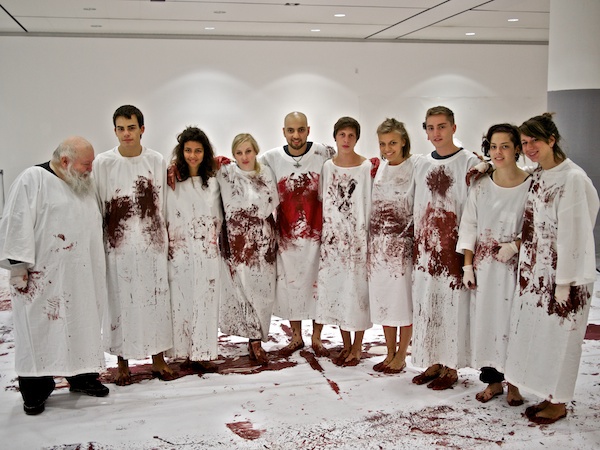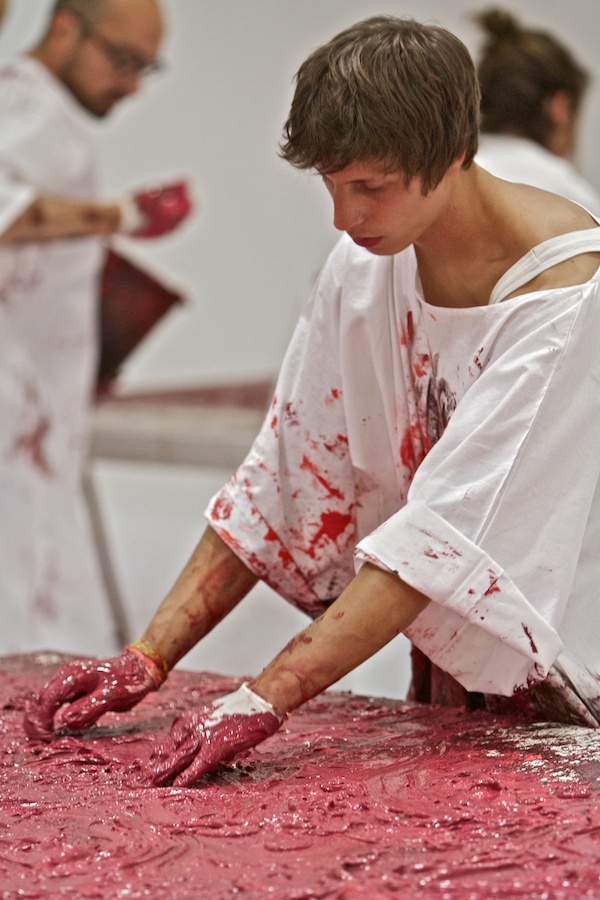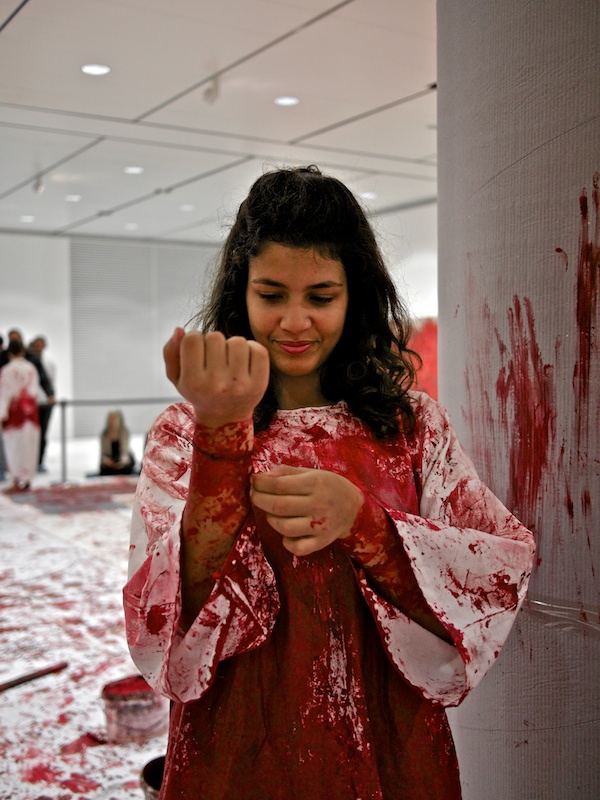
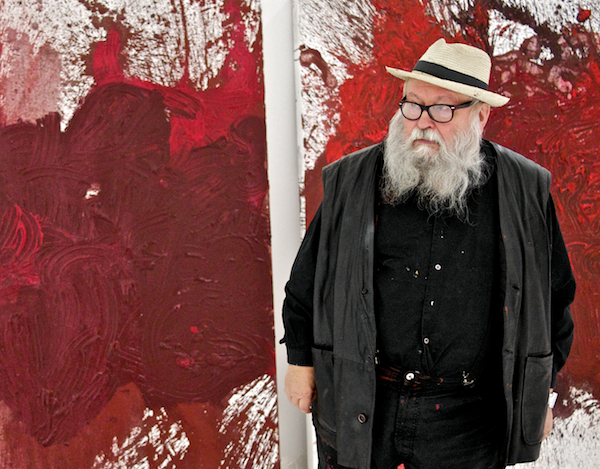
Viennese Actionism is by no means a movement actionists willingly decided to bring to life, but rather a term that critics used to describe the work of four Viennese artists: Günter Brus, Otto Mühl, Rudolf Schwarzkogler and Hermann Nitsch. Their art has been one of the fundamental steps towards the development of action art during the sixties.
The 64th Malaktion by Hermann Nitsch, maybe the most important Viennese Actionist, takes place at MART, the museum of modern art of Rovereto and Trento (IT) and is managed by Boxart Gallery. The performance consists in a four stage action painting technique on large canvas, performed live in front of the audience for an entire week.
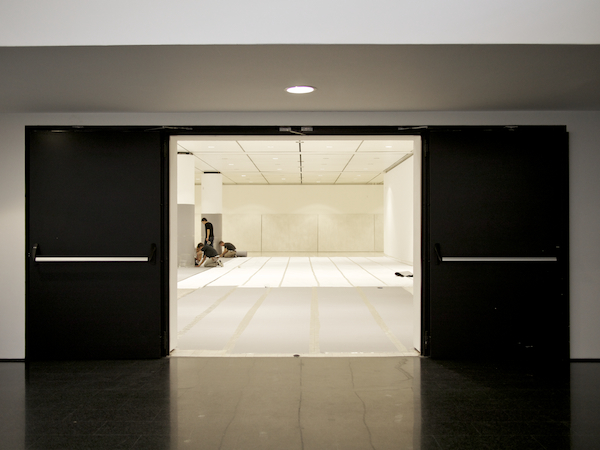
Federico and Julia, Nitsch's assistants, started out working with the pigments to prepare the actual colors for the painting part of the performance. A selected group of nine students from Libera Accademia di Belle Arti LABA and Istituto delle Arti "F. Depero", set up a large room of the museum in order to be able to host the dynamic and colorful performance for the following six days.



Once the set up part had been done, the artist stepped in, accompanied by his assistants and the students, all clad in white tunics, and the real performance started. In front of a row of canvases aligned on the ground, Nitsch himself took buckets of color and dynamically started to throw them on the canvases.
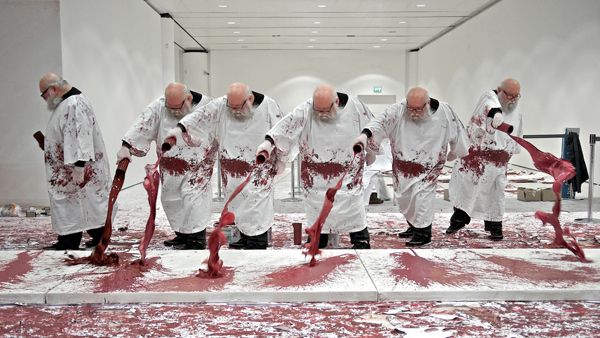
The main focus of this crucial moment is dual: action and color. Nitsch sees the color as life itself and in his past works he employed blood, because it was "color ripped from butchered animals hearts and entrails". In Malaktion 64 the color red is synthetic, but it still represents blood and life. This life force is also applied by the artist in the form of movement: Malaktion 64 is a perpetually moving performance; at this stage, Nitsch quickly throws red streams of color on the canvases and the resulting shapes are a clear representation of the movement involved in their creation.


After the colors are thrown on the canvas, the artist makes use of a very provocative technique. Using a broom, the excess color, still liquid on the canvas, is thrown out of it. The action is again extremely dynamic, the gesture is a single, quick swipe with the broom. The patterns it creates on the canvas are slim streaks of color, reminiscent of the iconic blood splatters of all the works by Hermann Nitsch.



The fourth stage of the performance is the walk. The assistants and the students, under the direct guidance of the artist, walk barefooted on the freshly colored canvases. The walk is an extremely phisical part of the whole performance and again two elements mix: movement and body. The bare skin of the foot becomes a paint brush, leaving trails that form harmonic patterns on the canvas, but at the same time, they seem to create a direct connection between the bodies of those involved in the creation and the piece of art itself. Moreover, following the transgressive tradition of Viennese Actionism, the audience of the performance is witnessing people trampling art during its own creation. This may not be the most aesthetically pleasing part of Malaktion 64, but it surely is the one that bears the strongest and deepest meaning.



After the walk, when the colors have dried, the fourth and last stage of the performance begins, when Nitsch literally gets his hands on the canvases. Partially covering the footprints of the walk, using thicker colors, the artist starts a manipulation process, in which his own hands become the brush. The process employs once again a very direct link between the body and the painting: the matter, the physical vessel of the color itself.
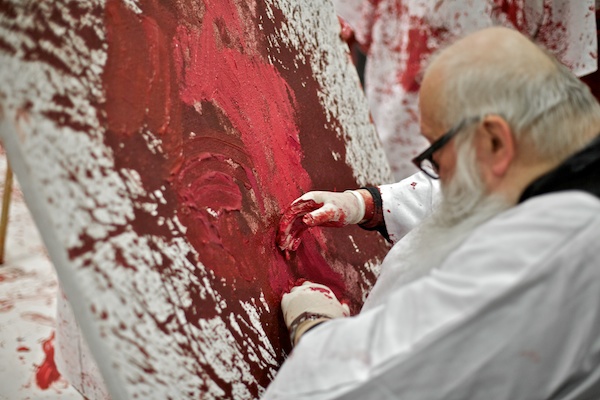



To complete the paintings, the very tunics that where used by Hermann Nitsch and all his assistants are stapled to the canvases. The tunics were, in the beginning, white and clean; by the end of the performance, the color stains, derived by the strong physical involvement of the wearer, turn the tunics into paintings themselves.
The final combination of canvas and tunic is an incredible sight indeed.




THE STUDENTS

